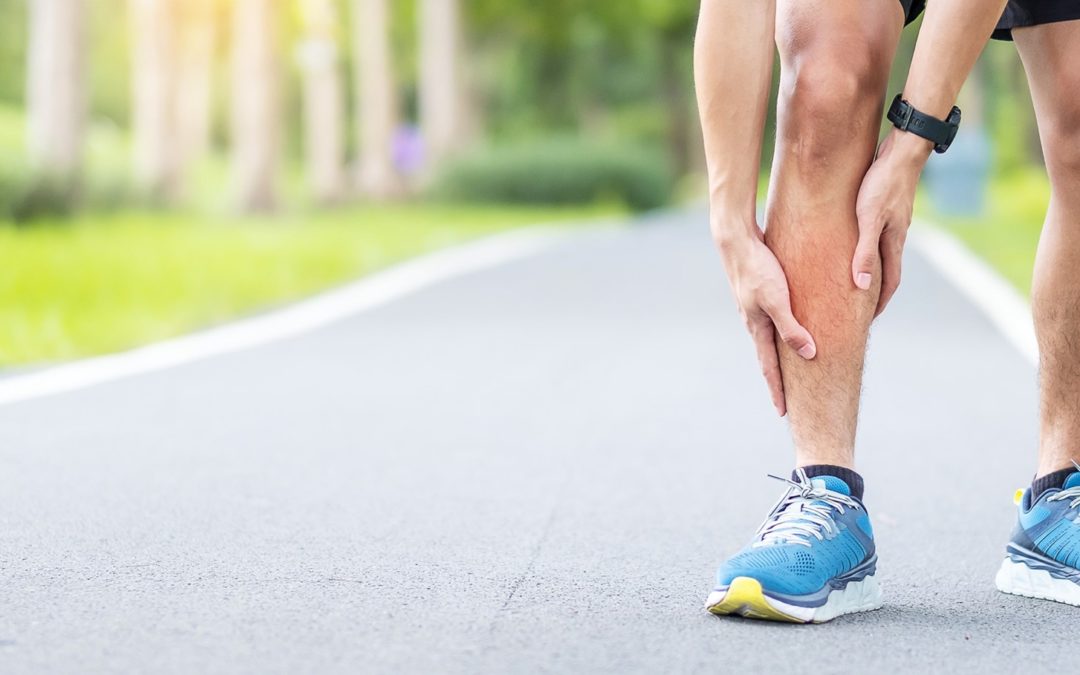Medial tibial stress syndrome (MTSS), also known as ‘shin splints’, is a condition characterised by pain and tenderness along the inner edge of the tibia (also known as your shinbone). MTSS is a common injury among athletes and runners, typically seen in sports that involve repetitive stress on the lower leg bones, such as running, jumping, and dancing.
What causes MTSS?
MTSS is caused by repetitive stress on the lower leg bones, particularly the tibia (shinbone). The stress leads to inflammation and irritation of the muscles, tendons, and periosteum (the membrane that covers the bone). The main contributing factors to MTSS include:
- Overuse and training errors: overloading the lower leg bones due to training errors such as rapid increases in intensity, duration, or frequency of activity, insufficient rest or recovery between activity, or sudden changes in surface, footwear, or running technique.
- Changes in muscle function: Changes in the way muscles function e.g., calf or hip weakness, tightness, endurance etc can increase the load on the tibia (shinbone).
- Biomechanical factors: There are some studies that suggest biomechanical factors such as significant leg length discrepancies, flat feet, or high arches may contribute to MTSS.1
- Footwear: Worn-out or improper shoes can exacerbate stress on the lower leg.
- Training surface: Hard and uneven surfaces such as concrete or asphalt can increase the impact forces born by the shinbone and contribute to MTSS.
What are the symptoms of MTSS?
The most common symptom of MTSS is pain and tenderness along the inner edge of the shinbone, which usually develops gradually and worsens with activity. The pain can be described as a dull ache or a sharp, stabbing sensation and may be accompanied by swelling, redness, or warmth in the affected area. In severe cases, the pain may persist even at rest or with simple activities such as walking.
How is MTSS diagnosed?
The diagnosis of MTSS is usually based on a thorough history and physical assessment performed by your physiotherapist. Your physiotherapist may ask you about your symptoms, training regimen, footwear, and training surface. They may also look at your walking and running technique, assess your foot and ankle mechanics, and test your strength, flexibility, and balance.
Imaging studies such as X-rays or magnetic resonance imaging (MRI) are not usually required for diagnosing MTSS, but may be necessary to rule out other conditions such as a stress fracture.
What is the treatment for MTSS?
The treatment of MTSS is aimed at reducing pain, inflammation, and promoting healing. The initial management includes:
- Activity modification: avoiding or reducing the activities that aggravate your symptoms for a few days to weeks to allow the tissues to heal. Cross-training or low-impact exercises such as swimming or cycling may be recommended.
- Ice: applying ice to the affected area for 15-20 minutes, several times a day, can help reduce pain and inflammation.
- Rehabilitation exercises: strengthening, stretching, and balance exercises for the lower leg muscles can help improve your biomechanics and reduce the risk of recurrence.
- Manual therapy: a physiotherapist may use techniques like soft tissue mobilisation and joint mobilisations to improve flexibility and reduce pain.
- Footwear and training modifications: using proper-fitting shoes with appropriate support, and avoiding hard and uneven surfaces can help reduce the impact forces on the lower leg bones.
- Orthotics: orthotic devices can help correct biomechanical issues and redistribute stress more evenly.
- Referral: In some cases, a referral to a sports doctor and dietician may be warranted, to address issues related to the bone health of the athlete, especially if it is a recurrent issue.
If you are experiencing pain along your shin bone and concerned it may be MTSS, book a time to see one of our physiotherapists for a comprehensive assessment and treatment plan.
References
- Menéndez, C., L. Batalla, A. Prieto, et al., Medial tibial stress syndrome in novice and recreational runners: A systematic review. International Journal of Environmental Research and Public Health, 2020. 17(20): p. 7457.
- Boer, P.-H., M.P. Schwellnus, and E. Jordaan, Chronic diseases and allergies are risk factors predictive of a history of Medial Tibial Stress Syndrome (MTSS) in distance runners: SAFER study XXIV. The Physician and Sportsmedicine, 2022: p. 1-9.
- Milgrom, C., E. Zloczower, C. Fleischmann, et al., Medial tibial stress fracture diagnosis and treatment guidelines. Journal of science and medicine in sport, 2021. 24(6): p. 526-530.
- Kuwabara, A., P. Dyrek, E.M. Olson, et al., Evidence-Based Management of Medial Tibial Stress Syndrome in Runners. Current Physical Medicine and Rehabilitation Reports, 2021: p. 1-9.
Author:
Adam Shaw

